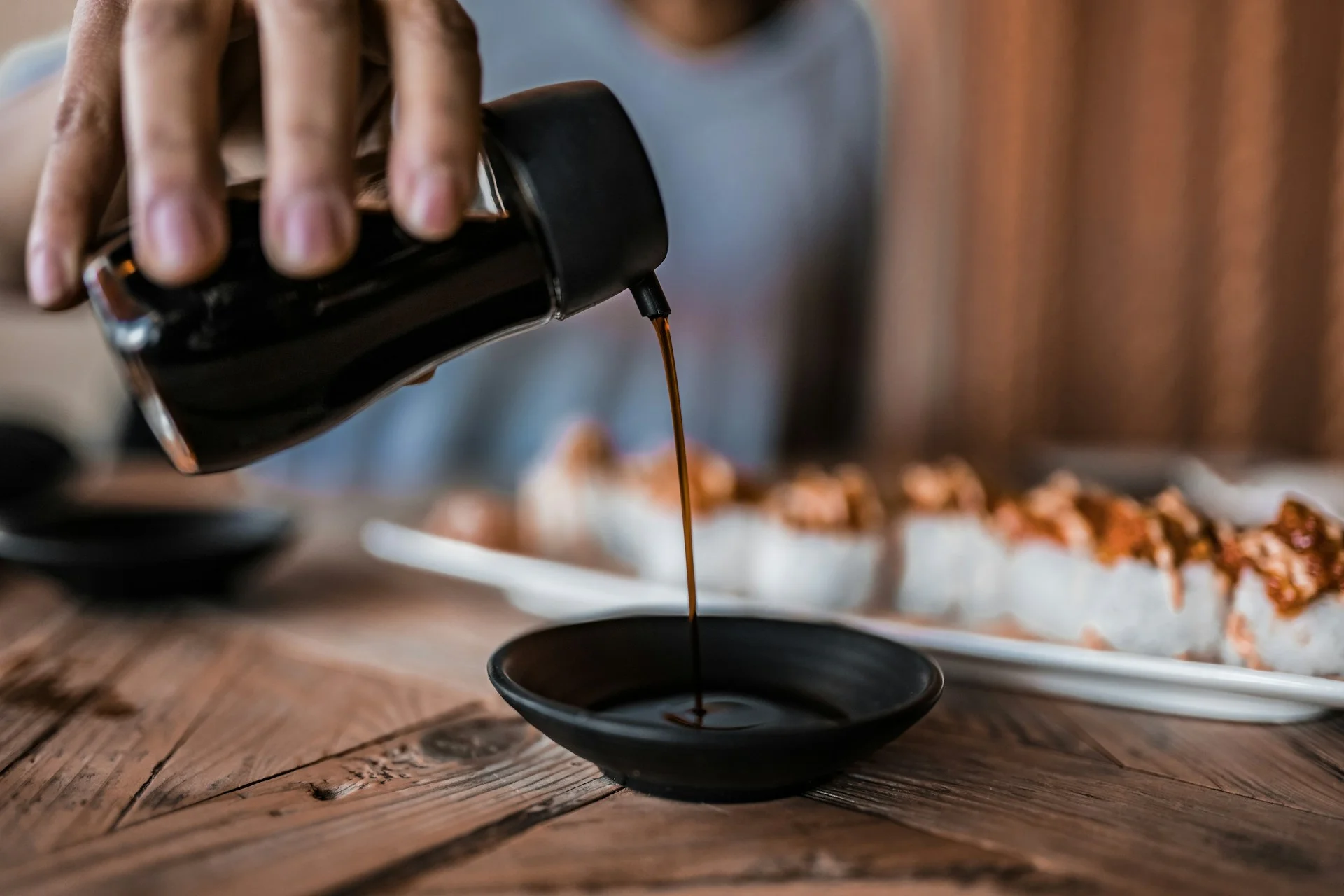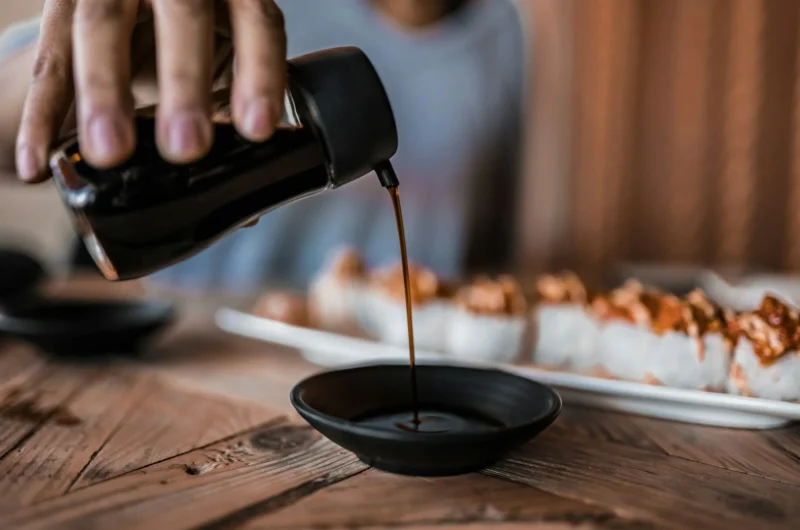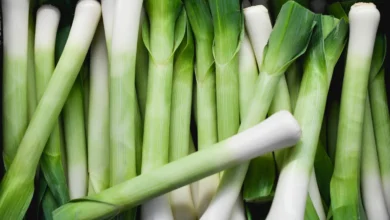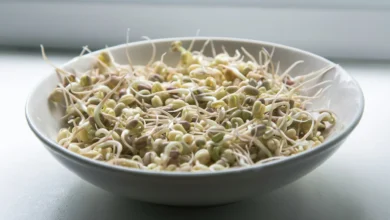Substitutes for Dark Soy Sauce – Substitutes & Recipe
If you love the rich, savory flavor of dark soy sauce, you know that special, almost sweet depth it adds to dishes. That thick, dark color instantly takes stir-fries or marinades to the next level. But what happens when that pantry staple’s missing? No worries – it’s a chance to experiment and broaden your culinary horizons! There are plenty of delicious substitutes to tickle your taste buds.
Contents
Substitutes for Dark Soy Sauce
While you might not find the exact umami punch of dark soy sauce, the right replacement can still achieve a similar savory depth and pleasant color in your recipes. Keep experimenting with different ingredients until you find combinations that sing for you! The fun part of substitutions is discovering new flavor profiles that work wonderfully, even when they aren’t a perfect match.
Substitutes
Remember, finding the perfect dark soy sauce replacement depends on what you’re cooking and the flavor you want to achieve. With all of these options, it’s helpful to start with smaller amounts and adjust to taste!
1. Light Soy Sauce
The classic go-to! Light soy sauce offers a familiar base – it’s lighter in color and saltier with less concentrated depth than dark soy sauce. To enhance the taste and bring it closer to a dark soy sauce substitute for a meat dish, consider adding a touch of sweetness from ingredients commonly used in Asian-inspired stir-fries. This creates a similar umami punch and can help create a delicious glaze. Alternatively, if you want to try your hand at transforming that bottle of light soy sauce, here’s a simple method for how to make dark soy sauce from regular soy sauce:
- Combine 1 teaspoon of light soy sauce with 1/2 teaspoon of molasses for a simple dark soy sauce substitute.
Keep in mind: While kecap manis (a sweet Indonesian soy sauce) also adds sweetness and some color, it has a much thicker consistency and distinct flavor profile that could drastically alter the intended taste of your dish.
2. Teriyaki Sauce
Teriyaki offers that deep umami, a salty-sweet hit, and the thick, glossy texture often desired when seeking a dark soy sauce alternative. With its dark color and bold flavor profile, it’s commonly used in stir-fries, as a dipping sauce, or as a topping for noodles, salads, soups, dumplings, and more. It makes a decent marinade/condiment when you already have this in your pantry. While soy sauce forms a fundamental flavor layer in teriyaki, it does bring its own signature flavors to the table due to the addition of spices like garlic, ginger, sake, or mirin. This subtle change might mean you need to slightly tweak the other flavors in your recipe, or if needed, adjust the amount of teriyaki used – but usually, you can achieve similar results to dark soy sauce with this pantry staple.
- Substitute 1 teaspoon of teriyaki sauce for 1 teaspoon of dark soy sauce, keeping in mind its additional sweetness and thickness.
3. Oyster Sauce
Typically made from oyster extracts, water, salt, sugar, MSG, and corn starch, oyster sauce delivers an earthy, salty, and sweet complex flavor that lends itself well as a dark soy sauce substitute oyster sauce. With its rich color and bold savory flavor, it easily enhances a variety of dishes, especially those showcasing tofu or meat. If you enjoy subtle seafood notes, this makes a fantastic stand-in, but use it in moderation so its unique caramelized oyster flavor doesn’t overwhelm the dish.
- Use 1 teaspoon of oyster sauce as a flavorful substitute for 1 teaspoon of dark soy sauce, noting its additional sweetness.
4. Hoisin Sauce
Thick and robustly flavored, hoisin sauce – commonly made with fermented soybean paste – lends a salty, sweet, slightly tangy flavor with depth akin to dark soy sauce. Because of its thicker texture, it works exceptionally well as a glaze, particularly for stir-fries and meat-based dishes. You can often use it as a dipping sauce and marinade as well. However, keep in mind that hoisin sauce has a bolder and more complex flavor profile than dark soy sauce due to additional ingredients like sesame seeds, chili pepper, and garlic. This difference might alter the look and taste of your dish, but those add-ons can often improve the overall culinary experience! With hoisin sauce as a potential stand-in, use just a pinch at first in comparison to the amount of dark soy sauce normally used in your recipe – its powerful punch takes it a long way!
- For a unique and slightly sweeter take, substitute 1 teaspoon of dark soy sauce with 1/2 teaspoon of hoisin sauce. Adjust based on the flavors of your dish.
5. Worcestershire Sauce
Worcestershire sauce adds an interesting twist – tangy, salty, and full of savory goodness. While generally used to elevate flavors in dishes outside of traditional Asian recipes, it works well when you crave a similar touch for Asian- or Italian-inspired recipes. However, Worcestershire lacks the sweetness and thick consistency often desired for many dark soy sauce substitutes – if using this, you might end up needing a different component with some sticky sweetness for carmelized, glaze-like textures. The strong umami profile still helps it shine as a base in marinades and flavor enhancement for sauces. This option has a strong flavor on its own, so a sweetener alongside Worcestershire – such as honey or sugar – will help better replicate that dark soy sauce flavor.
- For a tangy alternative to 1 teaspoon of dark soy sauce, try 1/2 teaspoon of Worcestershire sauce. Adjust to your taste.
6. Mushroom-Flavored Dark Soy Sauce
A specialized variety, mushroom-flavored dark soy sauce combines mushrooms, various herbs, and spices with regular dark soy sauce. It still offers that beloved dark color and thick texture, with a slightly lighter sweet touch than traditional dark soy sauce. If the original recipe emphasizes the intense flavor of dark soy, this may not completely replicate that rich, deeply caramelized depth, but the gorgeous visual of dark soy is achievable when this is swapped into your dish. Keep in mind the mushroom addition adds another layer of subtle earthiness; this substitute works best with savory dishes.
- Use mushroom-flavored dark soy sauce as a direct 1:1 replacement for regular dark soy sauce.
7. Tamari
Tamari, the Japanese version of soy sauce, provides a salty, umami-rich flavor profile comparable to both light and dark soy sauces without the extra sweetness. An excellent gluten-free alternative for anyone avoiding wheat, tamari can help recreate that signature umami taste and color found in dark soy sauces. Note that some varieties can be darker or lighter in color, so consider your desired visual along with the overall flavor profile when making a substitution.
- Use tamari as a 1:1 substitute for dark soy sauce, offering a similar salty, umami flavor.
Suggestion: While all of these options can work as substitutes, remember that flavor profiles of dark soy sauce brands can vary slightly depending on the specific ingredients and brewing methods. Some popular brands you can explore include Pearl River Bridge, Lee Kum Kee, and Kikkoman. If you’re feeling adventurous, consider experimenting with different dark soy sauce brands to find the one that best suits your taste!
8. Kecap Manis
Kecap manis is a thick, syrupy Indonesian sweet soy sauce with a complex flavor profile derived from palm sugar and other spices. Its sweetness and viscosity make it a unique substitute for dark soy sauce. Due to its sweetness, use it sparingly, starting with smaller amounts than you would with dark soy sauce and adjusting to taste. Kecap manis works particularly well in braises or as a finishing drizzle for rich savory dishes.
- Try this simple recipe: Combine 1 cup soy sauce with 1/2 cup palm sugar and add spices like star anise and cloves. Simmer until thickened.
9. Coconut Aminos
Made from fermented coconut sap, coconut aminos offers a savory, slightly sweet alternative to dark soy sauce. It lacks the same depth but can provide a hit of umami flavor. Consider enhancing it with a splash of rice vinegar or lemon juice to add a touch of brightness. Coconut aminos works well in stir-fries, dipping sauces, and as an ingredient in marinades. Due to its milder flavor, you may need to use slightly more coconut aminos than you would dark soy sauce.
- While readily available commercially, you can make your own by collecting fresh coconut sap, letting it ferment for a few weeks, and then adding salt.
10. Mushroom Sauce
Savory and rich in umami, mushroom sauce offers an earthy alternative to dark soy sauce. While lacking the sweetness of dark soy sauce, it brings its own complex flavor profile. Utilize mushroom sauce in dishes where earthy notes are desirable, such as stews, gravies, or as a base for vegetarian stir-fries. Adjust seasoning levels in your recipe accordingly, as mushroom sauce can be quite salty.
- A basic recipe involves sautéing 1 pound of sliced mushrooms with onions, adding 1 cup vegetable broth, herbs like thyme, and simmering until reduced.
What Does Dark Soy Sauce Taste Like
It has a distinct flavor profile that really sets it apart from other soy sauce varieties. Imagine a more complex and robust take on classic Chinese soy sauce.
While regular soy sauce delivers a strong, salty taste, dark soy sauce is still savory but with a milder saltiness. This lets those slightly sweet notes and a hint of molasses-like richness shine through. Some varieties might even have a touch of caramel complexity to their sweet taste.
Dark soy sauce offers a flavor adventure with every drop. Here’s what to expect:
- Rich and Deep: An intense flavor that provides depth and complexity to dishes.
- Umami Powerhouse: A strong umami flavor – that savory, meaty, almost brothy taste – creates a satisfying richness.
- Malty Sweetness: Notice subtle sweetness with hints of molasses or caramel, adding complexity without being overpowering.
- Less Salty: The reduced saltiness allows other flavors to shine through, offering balance.
- Earthy and Nutty: Some varieties carry undertones of earthiness and nuttiness for added depth and warmth.
- Balanced Bitterness: A slight bitterness can be present, providing a subtle counterpoint to the sweetness and saltiness.
Dark Soy Sauce vs. Light Soy Sauce
Dark soy sauce stands out from its lighter counterparts. Let’s see how it compares to regular light soy sauce:
| Feature | Light Soy Sauce | Dark Soy Sauce |
| Color | Light brown | Dark brown, almost black |
| Taste | Salty | Salty, slightly sweet, malty, umami |
| Sweetness | None | Slight, caramel or molasses notes |
| Fermentation | Short | Extended |
| Primary Use | Seasoning | Seasoning and color |
| Examples | Stir-fries, dipping sauces | Stir-fries, marinades, braises |
Dark Soy Sauce: Nutritional Value
The nutritional value of dark soy sauce can vary somewhat depending on the specific brand, ingredients, and production methods. However, here’s a general overview based on a typical serving size of 1 tablespoon (15ml):
- Calories: Approximately 15–20 calories
- Total Fat: Less than 1 gram
- Sodium: Around 800–1000 milligrams
- Total Carbohydrates: 1–2 grams
- Protein: 1–2 grams
Important Note: Dark soy sauce is relatively high in sodium, which contributes to its rich flavor. Individuals who need to monitor their sodium intake due to high blood pressure or other health conditions should be mindful of their consumption.
Substitutes for Dark Soy Sauce
Course: saucesCuisine: Chinese16
servings10
minutes5
minutes20
kcal30
minutes45
minutesHere is the recipe ingredients, and instructions. You can also print the recipe for your ease.
Ingredients
Makes 1 cup of dark soy sauce
1 cup soy sauce (regular or light soy sauce)
1/4 cup molasses
1 tablespoon dark brown sugar
1/4 teaspoon salt
1/4 teaspoon Chinese five-spice powder (optional)
Directions
- In a saucepan, combine all ingredients. Bring the mixture to a simmer over medium heat.
- Whisk until smooth and bring to a gentle simmer.
- Reduce heat and simmer for about 5 minutes, or until desired thickness and flavor are reached.
- Cool completely, then store in an airtight container in the refrigerator. Use within a month..
Notes
- True dark soy sauce benefits from a long fermentation process. Though delicious, this DIY version serves as a quick and tasty substitute in your favorite recipes.
Tips:
- Experiment with add-ins: To create your own unique take, consider adding a pinch of ginger, a piece of star anise, a bay leaf, or other aromatics during the simmering process for a more complex flavor.
- Adjust sweetness: Play around with the amount of molasses or brown sugar to achieve your desired level of sweetness.
- Thicken as needed: The cornstarch is optional; omit for a thinner version or increase for a glaze-like dark soy substitute.
Important Note on Homemade Dark Soy Sauce
It’s important to remember that homemade dark soy sauce won’t perfectly replicate the exact flavor intensity and complexity of commercially produced versions. True dark soy sauce undergoes a complex and lengthy fermentation process that adds nuanced layers of flavor. That said, this DIY version is still a quick and satisfactory substitute for many dishes where you require the color and general savory-sweet flavor of dark soy sauce.
Popular Recipes Using Dark Soy Sauce
Dark soy sauce is a staple ingredient that shines in many popular recipes across Asian cuisines. Here are a few examples of dishes where dark soy sauce adds that irresistible depth, color, and rich flavor:
- Beef and Broccoli Stir-Fry: The glossy, flavorful sauce that coats the beef and vegetables gets its robust flavor from dark soy sauce. It pairs beautifully with tender beef and vibrant broccoli.
- Char Siu (Chinese BBQ Pork): A key component in the marinade, dark soy sauce adds deep color and imparts a savory-sweet flavor to this succulent pork dish.
- Braised Soy Sauce Chicken: An essential ingredient for this classic Chinese dish! It provides a rich, caramelized sauce that coats tender chicken pieces, creating a flavorful and comforting dish.
- Mapo Tofu: This fiery Sichuanese dish showcases soft tofu in a spicy, savory sauce. Dark soy sauce lends depth and umami, balancing the spice and heat.
- Soy Sauce Eggs (Marbled Tea Eggs): A popular snack and side dish in many Asian countries! Dark soy sauce creates a beautiful marbled pattern on the boiled eggs while infusing a savory flavor.
- Lo Mein: The sauce, which gives this popular Chinese stir-fried noodle dish its color and richness, often includes dark soy sauce for enhanced overall taste.
- Chinese-Style Spare Ribs: Whether used in a marinade or as a caramelized glaze, dark soy sauce provides a sweet, sticky, savory coating for irresistible ribs.
As you can see, dark soy sauce offers a unique flavor, color, and amazing versatility! You’ll find it used in a wide range of Asian dishes, where it adds depth and enhances the overall taste.
Health Benefits of Dark Soy Sauce
While dark soy sauce contains small amounts of certain vitamins and minerals – like iron, potassium, and some B vitamins – the quantities are generally minimal. So, relying on it for significant amounts to meet your daily dietary needs isn’t really feasible. Here’s where the real health benefits might come in:
- Potential Antioxidant Properties: Some studies suggest that dark soy sauce contains antioxidants, which can help protect cells from damage caused by free radicals. More research is needed to confirm the extent of these benefits in humans.
- Supports Digestion: Fermented foods like soy sauce can potentially promote healthy gut bacteria. However, these benefits are attributed to fermented foods in general, not strictly to dark soy sauce.
It’s important to note that due to the high sodium content, excessive consumption of dark soy sauce should be avoided. Moderation is key!
Conclusion
While dark soy sauce offers a unique depth and flavor, don’t let its absence limit your culinary creativity! With an understanding of the different profiles, from the familiar notes of light soy sauce to the bold sweetness of oyster sauce, you can unlock exciting flavor variations in your dishes. Experimentation is key— so dive in, explore those readily available substitutes, and let your taste buds guide you in discovering delicious new flavor combinations.
RELATED: Substitutes for Mint
RELATED: Pesto Mac and Cheese
______________________________
Frequently Asked Questions
What can I substitute for dark soy?
Several options offer similar flavors, though keep in mind they might change the final dish slightly.
- Light soy sauce or shoyu: The most common, with good umami flavor, but lighter and less intense. Great for stir-fries, fried rice, marinades, and dipping sauces.
- Tamari: Gluten-free and a decent substitute if you need to avoid wheat.
- Oyster sauce: Adds extra sweetness and sometimes an undertone of seafood.
- Teriyaki sauce: Offers a rich umami flavor and thicker texture, useful for glazes and as a topping.
How to make regular soy sauce into dark soy sauce?
A few quick tricks give you a similar color and sweet punch:
- Mix 2 teaspoons of light soy sauce with ½ teaspoon molasses and ⅛ teaspoon sugar.
- If you don’t have molasses, heat light soy sauce and dark brown sugar over medium-high heat until thickened and reduced.
Can I skip dark soy sauce?
A: Sometimes! If the recipe calls for a small amount, primarily to enhance the color, you can often skip it with a minimal difference in taste, ensuring adequate light soy sauce is present. However, if dark soy plays a prominent flavor role, consider a close substitute to avoid missing out on that depth.
What is another name for dark soy sauce?
The Japanese term “koikuchi shoyu” refers to dark soy sauce. Since koikuchi shoyu is a versatile and all-purpose choice, if a recipe simply calls for “soy sauce,” this is likely the type they intend you to use.






